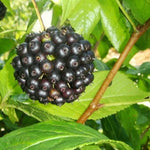Subscribe and save 10%!

Siberian Ginseng / Russian Root (Eleutherococcus senticosus)
€4,95 EUR
Unit price perExpected delivery date: 13 December to 20 December.
Applies to orders within Sweden. For other countries - see our delivery terms .
Out of stock
Meddela mig när produkten finns i lager:
Share
€4,95 EUR
Unit price perSEEDS (6 capsules = approx. 30 seeds/bag)
Common names: Siberian Ginseng, Eleuthero, Kan Jang, Taiga Root, Thorny Ginseng, Ciwujia, Shigoka, Devil's Bush / Shrub, Touch-Me-Not, Wild Pepper
Scientific name: Eleutherococcus senticosus
Family: Araliaceae
Plant history & use:
Siberian Ginseng, or Eleuthero as it is also called, is a winter-hardy "Ginseng species" that belongs to the same family as the Korean Ginseng (Panax ginseng) and the American Ginseng (Panax quinquefolius). However it is not related to the Indian Ginseng.
From this Ginseng, it is the root bark that is used for its adaptogenic properties. Adaptogens are substances that help the body deal with different types of stress. Siberian Ginseng is well known among athletes and is also used to treat sleep disorders. Traditionally used in Russian/Chinese medicine.
Much of the Siberian Ginseng available on the market is ground whole roots, while in fact it is only the bark from the roots that contains the active substances of interest. Here, of course, it is an advantage to grow the Eleuthero yourself, as you control the entire process - from seed to consumption-ready product - by yourself.
Cultivation:
Siberian Ginseng is a shrub originating in Northeast Asia that often grows in forests as undergrowth or forms dense thickets. The bush is thorny and can grow up to 4 meters depending on location.
It thrives outdoors in temperate climate Europe and does not have high requirements to grow. Soil-wise, it can handle everything from sand to heavy clay soils, it is not demanding. However, it thrives best in soil mixed with leaves and compost (remember its natural environment is woodlands). Prefers light to partial shade. Can also be grown in a pot.
To harvest Eleuthero, you cut off one/several of the plant's underground shoots and let the plant grow. You then peel off the bark from the roots. Dry the root bark and discard the inner root.
Siberian Ginseng is a robust species with few known pests.
The flowers turn yellow-white/purple which later form black round fruits in clusters.
Sowing:
Seeds from Siberian Ginseng can be challenging to germinate. The seeds should be stratified to optimize conditions for succesful germination. This can be done by:
- Soaking the seeds for 1 day
- Put the seeds in an airtight plastic bag with sand/peat in the fridge for 2-3 months. Some seeds may need to lie for a whole year.
- Sow seeds in sowing soil, cover with 0.5 cm of soil. Keep the soil moist
If no seeds germinated after 4 months you can try one of these 2 methods:
- Leave the seeds in the ground/pot where you have sown them for the rest of the year. Let the natural winter be the long cold period they need. Be sure to protect the soil from heavy rainfall or picking birds with a covering net or similar. Next spring the seeds will hopefully emerge above the soil.
- Move the seeds in a pot into the fridge. Keep them there until next years spring arrives. Move the pot outdoors and wait for germination.
Characteristics:
Lifespan: Perennial
Location: Partial shade/Sun
Height: 2-4 m
Germination Time: 2-4 months
USDA Zone: 3-7
- Choosing a selection results in a full page refresh.
- Opens in a new window.







